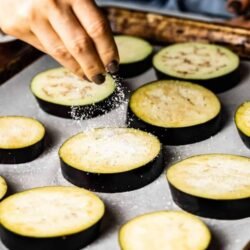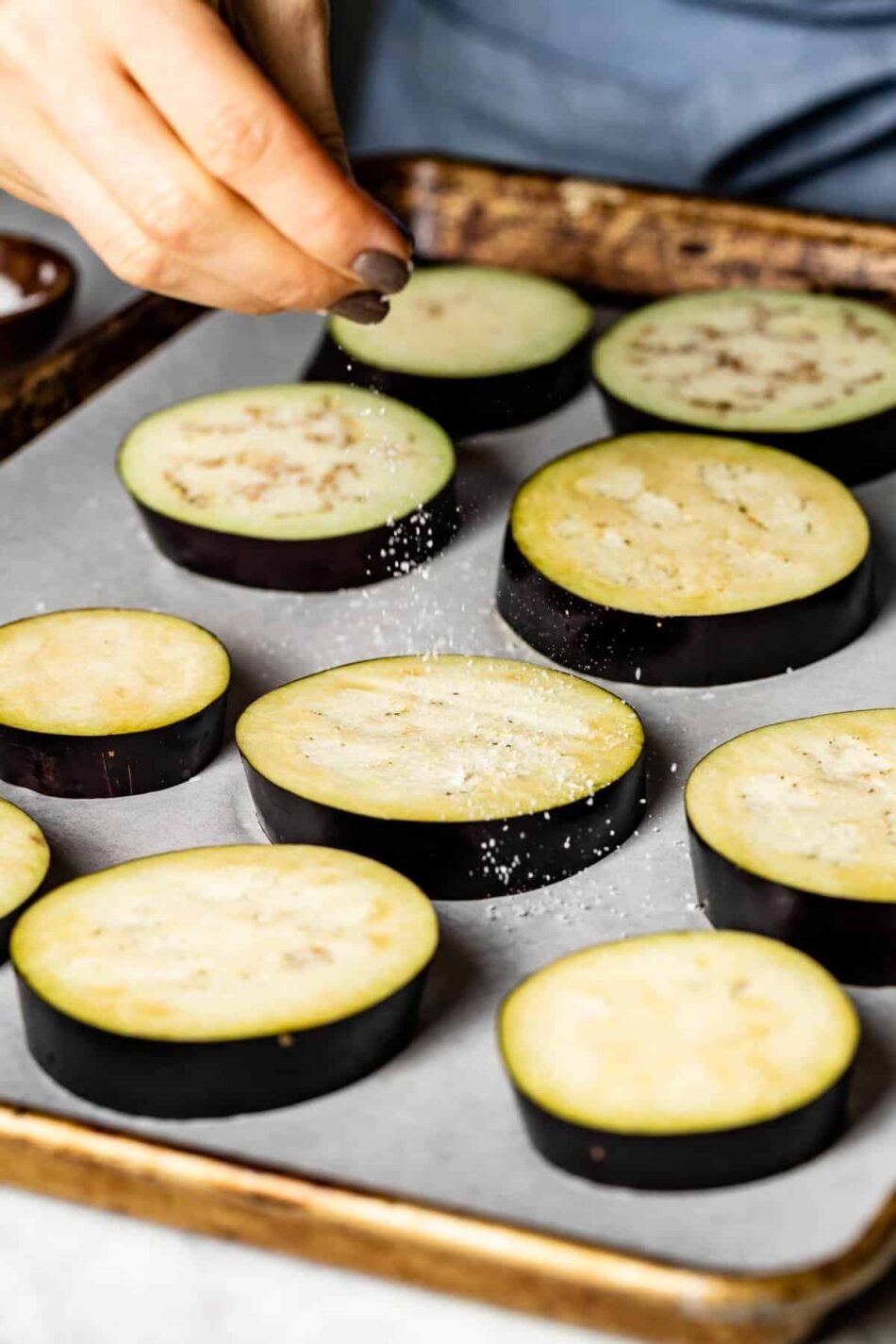“Eggplant that’s freshly picked, harvested before it’s full of seeds, and eaten within a few days is naturally sweet and doesn’t need salting.” -Deborah Madison
In other words, fresh, young eggplants bought at the grocery store or farmer’s market likely don’t need to be salted. Even so, there are other times when salting eggplant may still be a good idea:
Salting eliminates bitter flavors that come from storing your eggplants too long or using older eggplants. Today’s eggplants may be sweeter, but they still have some bitter liquid inside, especially if they are not fresh.
Fried eggplant is crispier and more savory when it’s been pre-salted. When preparing eggplant for frying, the salting process ensures the vegetable absorbs less oil. As a result, taking the time to salt eggplant prior to frying yields perfectly seasoned fried eggplant with a silkier texture.
Salted eggplants are seasoned from the inside out. Translation: Their interiors will have the same savory, rich flavor as their exteriors. It is an easy way to make eggplant taste good.
In short: Do you need to salt eggplant before cooking? Not always. But it can’t hurt!

How To Salt Eggplant
Ingredients
- 1 eggplant*
- Kosher Salt
Instructions
Method 1: Sweating Eggplants
- Wash and slice the eggplant: Wash the eggplant under cold water and dry it with a kitchen towel or a paper towel. Then, slice off the stem and cut the eggplant as desired.

- Sprinkle eggplant with salt: Generously sprinkle eggplant slices* with one to two teaspoons of salt, being sure to cover season them on both sides.

- All the eggplant slices sweat: Place the seasoned eggplant in a colander for 30 minutes to an hour. Once little droplets of moisture start to appear, rinse your eggplant slices under cold water to remove excess salt.

- Pat-Dry the eggplant: Layer a baking sheet with a couple of sheets of paper towels and arrange the drained eggplant slices on top. Using another sheet of paper towel, gently press each piece to remove as much excess moisture as possible. Repeat these steps with all remaining slices of eggplant.

Method 2: Brining Eggplants (aka Soaking Eggplant in a Saltwater Bath)
- Wash and slice the eggplant: Wash the eggplant under cold water. Then, dry it with a kitchen towel and slice off its stem. Next, slice the eggplant as needed (either cubes or steaks/slices will work).

- Make the saltwater bath: Fill a large bowl with cold tap water and stir in a tablespoon of kosher salt.

- Soak the eggplant: Place the eggplant slice in the brine, submerging each slice of eggplant in the water. If needed, place a small plate on top to ensure no piece's float to the surface. Let them soak for 30 minutes to an hour.

- Drain and rinse them with cold water.

- Dry brined eggplant slices: Line a sheet pan with a few sheets of paper towels and place your drained slices on top in a single layer. Then, use a few paper towels to press down on the pieces, drying out the eggplant with gentle pressure.

Notes
- I use widely available globe eggplants. However, you can salt other types of eggplants using this method.
- *As you are salting the eggplant, make sure to coat the whole surface with salt. I use a teaspoon of kosher salt for a medium-sized globe eggplant. However, you can use more or less depending on the size of your eggplant.

